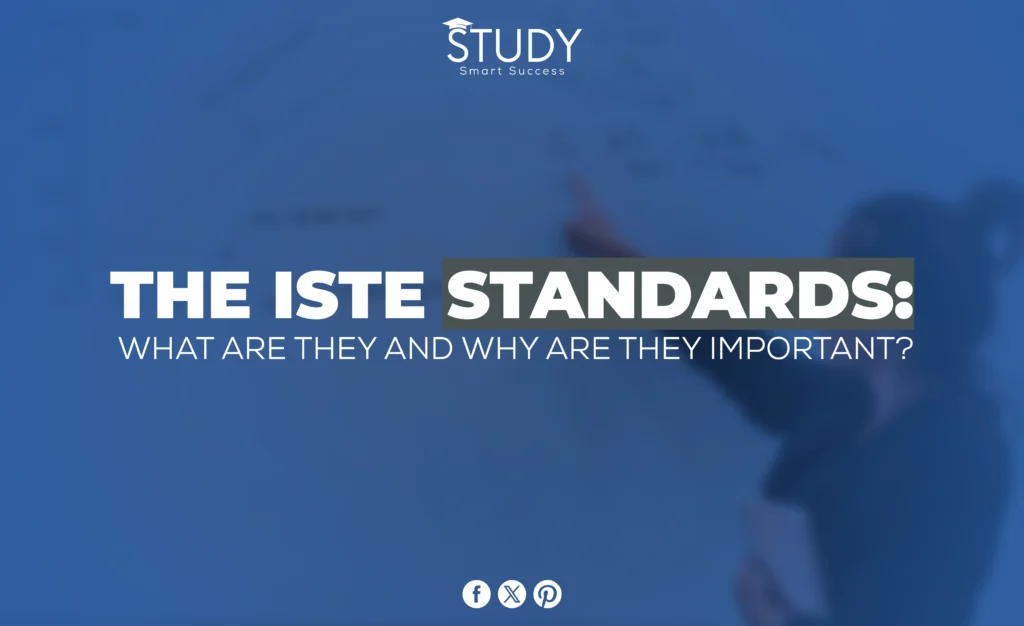Introduction
Since the digital age began, learning has altered, as have teacher and student expectations. The International Society for Technology in Education (ISTE) Standards can help teachers use technology to entertain learning and stimulate critical thinking, communication, and collaboration. Knowing these standards and why they matter is crucial for long-term success in today’s fast-changing technology environment. This blog article will examine the International Society for Technology in Education Standards and how they affect modern teachers.
Understanding the ISTE Standards – What They Are and What They Mean
Technology develops quickly, so teachers and students must master digital tools and methods. ISTE sets these rules. These regulations explain how to use technology in schools and other learning environments. But what do the regulations mean practically? International Society for Technology in Education Standards offer youngsters 21st-century skills like digital citizenship and creative problem-solving. Teachers may help students become responsible and aware online citizens by knowing and using these principles in their everyday lessons.
The Five Pillars of the ISTE Standards
International Society for Technology in Education Standards rules tell teachers how to use technology well in the classroom. An essential part of these rules is the Five Pillars, which set the stage for combining technology. The five bases are Digital Citizen, Knowledge Constructor, Innovative Designer, and Computational Thinker. Each pillar is essential for giving kids the skills and confidence they need to be good digital citizens in the modern world. Teach with these pillars to give your kids the skills to use technology to think critically, solve problems, work together, and speak clearly. Each of the Five Pillars offers students the skills they will need to be successful in the future. They also show teachers how to use technology effectively in the classroom.
1. Empowered Learner
Technology has made students more active in their learning. When students select how to learn, they are encouraged. Kids who have the tools don’t only ask teachers. Technology helps them learn, collaborate, and create possibilities. They thrive in a changing world because they are robust, curious, and adaptable. Students can learn for life and contribute to the global community with a “growth mindset” or “empowered learner mindset”.
2. Digital Citizen
As technology advances, online citizenship is more crucial than ever. We spend so much time working and communicating online that keeping safe and acting appropriately is vital. An excellent digital citizen knows about online privacy and safety, uses technology sensibly, and treats others with respect. It also implies being mindful of how our actions affect others and using technology to improve society. As digital citizens, we can make the internet a better place for everyone.
3. Knowledge Constructor
With all the new technology, ” constructing knowledge” is more important than ever. A “knowledge constructor” can get information, assess it, and use it in new and valuable ways. Successfully constructing knowledge can go a long way for anyone who wants to learn, whether they are students, workers, or just naturally curious.
4. Innovative Designer
Every artist aspires to create something unique, but the best break the norms. They are the original artists who always experiment and conceive of new methods. Their fresh ideas and new perspectives make their work stand out. New designers are changing the rules and shaping design. They can employ technology, build durable designs, or be imaginative to make mundane items look remarkable.
5. Computational Thinker
As technology becomes increasingly vital, we need more computational thinkers. A computational thinker approaches problems carefully and scientifically and breaks them down into smaller, easier-to-handle components. This mindset is crucial in computer science, math, and engineering. Also useful in daily life. People can uncover patterns and linkages and solve complex issues better by thinking computationally. Computational thinking helps people flourish in life and work.
The Benefits of Adopting the ISTE Standards in Education
Technology is making education more crucial in determining kids’ futures. The International Society for Technology in Education (ISTE) sets standards to help teachers incorporate technology. The ISTE standards can assist schools in preparing students for the digital age, improving instruction, and improving teacher-student communication. These standards help youngsters develop job-related skills and be productive digital citizens. The ISTE standards can also assist teachers by providing a technology-based lesson plan. Adopting the ISTE standards is one of the finest ways to prepare pupils for a changing digital world.
Strategies for Incorporating the ISTE Standards into Your Curriculum
It may seem challenging to incorporate the International Society for Technology in Education Standards into your teaching. However, if you know how, it will become second nature. First, learn the rules and how they work. It would help if you determined how the ideas fit into what you already teach after understanding them. How do you apply the standards to your classes and tasks? This can include teaching children how to use technology, collaborate, think critically, and solve problems. Using the ISTE Standards in your classes can help students prepare for the future and make learning exciting.
Examples of Successful Implementation of the ISTE Standards in Schools and Classrooms
Schools and classes must teach kids how to utilize technology and behave online as the digital age progresses. The International Society for Technology in Education Standards outline how to use technology effectively in school. Fortunately, many schools are successfully using these standards. Success stories like individual learning and group projects using digital tools demonstrate how technology can improve learning. Teaching with the ISTE Standards gives students the skills they need to succeed in today’s world.
Conclusion
Learning can be fun and interesting for our kids if we understand the International Society for Technology in Education Standards and figure out how to use them in the classroom. Let’s work as school leaders to give kids more power by being open and using technology well. We should also make it easier for students to learn new things and come up with creative designs. We should also teach them how to think computationally and praise good uses of the ISTE Standards. This is a movement for change, and all teachers are free to join. The ISTE Standards can be used to change how people learn in both formal and informal settings. Allow us to work together to make sure that these digital badges lead to a bright future for our children!
Frequently Asked Questions
Q1: What are the ISTE Standards?
The International Society for Technology in Education made the ISTE Standards, which are a set of rules. They want to make it easier for technology to be used in schools so that kids can learn the digital skills they will need in the future.
Q2: Why are the ISTE Standards important?
In today’s digital world, ISTE Standards are essential for integrating technology into education. They educate digital and computational skills, encourage creative teaching methods, and prepare students for careers.
Q3: How can I incorporate the ISTE Standards into my curriculum?
Start by knowing the ISTE Standards and how they fit your curriculum. Next, deliberately include these criteria in your classes and tasks. This could involve significant technological use, cooperation, communication, critical thinking, and problem-solving.
Q4: Can you give examples of successful implementation of the ISTE Standards?
Numerous schools and classrooms nationwide have successfully integrated the ISTE Standards. Examples include technology-enabled individualized learning, collaborative digital projects, and computational thinking.
Q5: How can the ISTE Standards prepare students for the digital world?
The ISTE Standards emphasize digital literacy, responsible digital citizenship, problem-solving, computational thinking, and technology integration into instruction. These skills are essential for the increasingly digital workplace.


